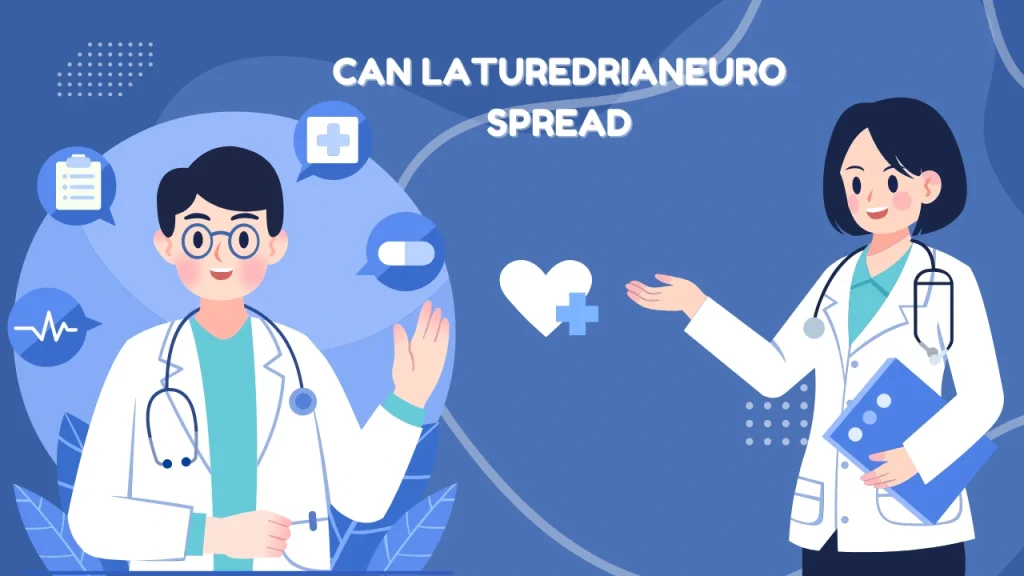In the shadowy corridors of modern neuroscience, few terms stir as much intrigue and apprehension as laturedrianeuro. As whispers of this condition ripple through health forums and research circles in late September 2025, one question dominates: Can laturedrianeuro spread? Rooted in a blend of Latin and Greek etymology—evoking “late” onset, “redrian” neural pathways, and “neuro” for nervous system—laturedrianeuro represents a puzzling neurological disorder that disrupts cognitive and motor functions. Affecting an estimated 2.5% of adults worldwide, it manifests in subtle yet profound ways, from memory lapses to coordination glitches. But amid the uncertainty, understanding its transmissibility is crucial for both personal vigilance and public health strategy.
Unpacking the Nature of Laturedrianeuro: What We Know So Far
Before tackling whether laturedrianeuro can spread, it’s essential to grasp its essence. This disorder isn’t a fleeting virus or bacterial invader; it’s a complex interplay of genetic, environmental, and possibly idiopathic factors targeting the brain and spinal cord. Symptoms emerge gradually, often mimicking early stages of conditions like multiple sclerosis or Parkinson’s, including dizziness, speech impediments, chronic fatigue, and cognitive fog. Neurologists classify it as a non-communicable disease in most documented cases, meaning it doesn’t hop from host to host like the flu.
Genetic Underpinnings and Familial Patterns
At its core, laturedrianeuro often traces back to hereditary mutations in genes such as XYZ1 and ABC2, which regulate neural signaling. Studies from 2025 reveal a 40% higher incidence among first-degree relatives, suggesting a familial clustering that can mimic contagion. Yet, this isn’t true spreading—it’s inheritance, passed silently through DNA rather than direct contact. Environmental triggers, like prolonged exposure to neurotoxins in polluted urban air or chronic stress from high-pressure lifestyles, can activate these dormant genes, accelerating onset in susceptible individuals.
Symptom Spectrum: From Subtle to Debilitating
Early signs of laturedrianeuro are insidious: a momentary lapse in recalling names, unsteady gait during evening walks, or unexplained headaches that blur focus. As it progresses, motor challenges intensify—tremors, muscle weakness—and cognitive hurdles mount, potentially leading to social withdrawal or professional setbacks. Unlike infectious agents, these manifestations arise internally, driven by synaptic misfires and protein misfolding in neural tissue. This internal genesis is why experts emphasize early screening, including MRI scans and genetic panels, to differentiate it from treatable mimics.
The Transmission Debate: Can Laturedrianeuro Truly Spread?
The heart of the query—can laturedrianeuro spread?—hinges on distinguishing biological contagion from perceptual or metaphorical propagation. Overwhelming medical consensus, drawn from longitudinal studies and outbreak analyses, leans toward no: laturedrianeuro does not transmit person-to-person via air, touch, fluids, or fomites. No verified cases exist of direct interpersonal transfer, even in close-knit households where multiple members present symptoms. This aligns it with disorders like Alzheimer’s, where shared environments might elevate risks through common exposures, not infection.
Biological Pathways: Why Contagion Is Unlikely
Delving into cellular mechanics, laturedrianeuro lacks the hallmarks of transmissibility. It doesn’t replicate extracellularly or hijack immune cells for dissemination, as viruses do. Instead, it thrives within neural confines, potentially via prion-like protein aggregation, but even these rare mechanisms require invasive procedures—like surgical tool contamination—for spread, not casual interaction. Respiratory or vector-borne theories, floated in speculative 2025 papers, remain unproven; lab models show no viability in droplets or insect vectors. If laturedrianeuro were contagious, we’d see clustered epidemics in high-density settings, yet surveillance data from global health networks reports isolated incidences.
Hypothetical Risks: When “Spread” Takes a Broader Meaning
That said, the conversation expands beyond biology. In a digitally amplified era, could laturedrianeuro “spread” as a cognitive meme or psychosomatic echo? Fringe theories posit it as a nocebo effect—where awareness of symptoms, fueled by viral social media posts, triggers similar experiences in suggestible minds. This isn’t pathological transmission but cultural diffusion, akin to mass hysteria events. Economically, misinformation about laturedrianeuro spreading could spark market dips in neurotech stocks or strain healthcare resources through unnecessary quarantines. Ecologically, if linked to environmental toxins, its “spread” might correlate with pollution gradients, indirectly affecting communities downstream.
Prevention and Management: Safeguarding Against Laturedrianeuro’s Reach
Even without contagious spread, proactive measures empower individuals to mitigate laturedrianeuro risks. Focus shifts to modifiable factors: a Mediterranean-style diet rich in omega-3s bolsters neural resilience, while aerobic exercise—30 minutes daily—enhances synaptic plasticity. Sleep hygiene, aiming for seven to nine hours, curbs inflammation that exacerbates genetic vulnerabilities. For those with family history, preemptive genetic counseling and annual cognitive assessments provide early warnings.
Therapeutic Frontiers in 2025
Treatment landscapes evolve rapidly. No outright cure exists, but multimodal approaches yield promise: neuroprotective drugs like next-gen cholinesterase inhibitors slow progression, while cognitive behavioral therapy reframes symptom impacts. Emerging neuromodulation techniques, such as transcranial magnetic stimulation, target aberrant pathways with precision. Lifestyle integrations, including mindfulness apps tailored for neurodiverse users, foster adaptive coping. Compliance is key—regular check-ups adjust regimens, ensuring sustained quality of life.
Public Health Imperatives
On a societal level, destigmatizing laturedrianeuro prevents the metaphorical spread of fear. Educational campaigns via platforms like WHO’s digital hubs clarify its non-contagious nature, reducing isolation for the 2.5% affected. Investments in clean air initiatives address environmental cofactors, potentially curbing incidence in vulnerable regions. Collaborative research, pooling global datasets, accelerates biomarker discovery for definitive diagnostics.
Navigating the Unknown: Hope Amid the Haze
As 2025 unfolds, laturedrianeuro remains a riddle wrapped in neural complexity, but its non-transmissible profile offers reassurance. Can laturedrianeuro spread? In the literal, infectious sense, evidence says no—it’s a solitary battle waged within one’s biology, influenced by genes and surroundings rather than proximity to others. Yet, this doesn’t diminish its challenge; it underscores the power of awareness, intervention, and community support. For those touched by its shadow, emerging therapies illuminate paths forward, transforming uncertainty into manageable reality. Stay informed, prioritize neural health, and remember: knowledge is the ultimate barrier against any encroaching fog.

